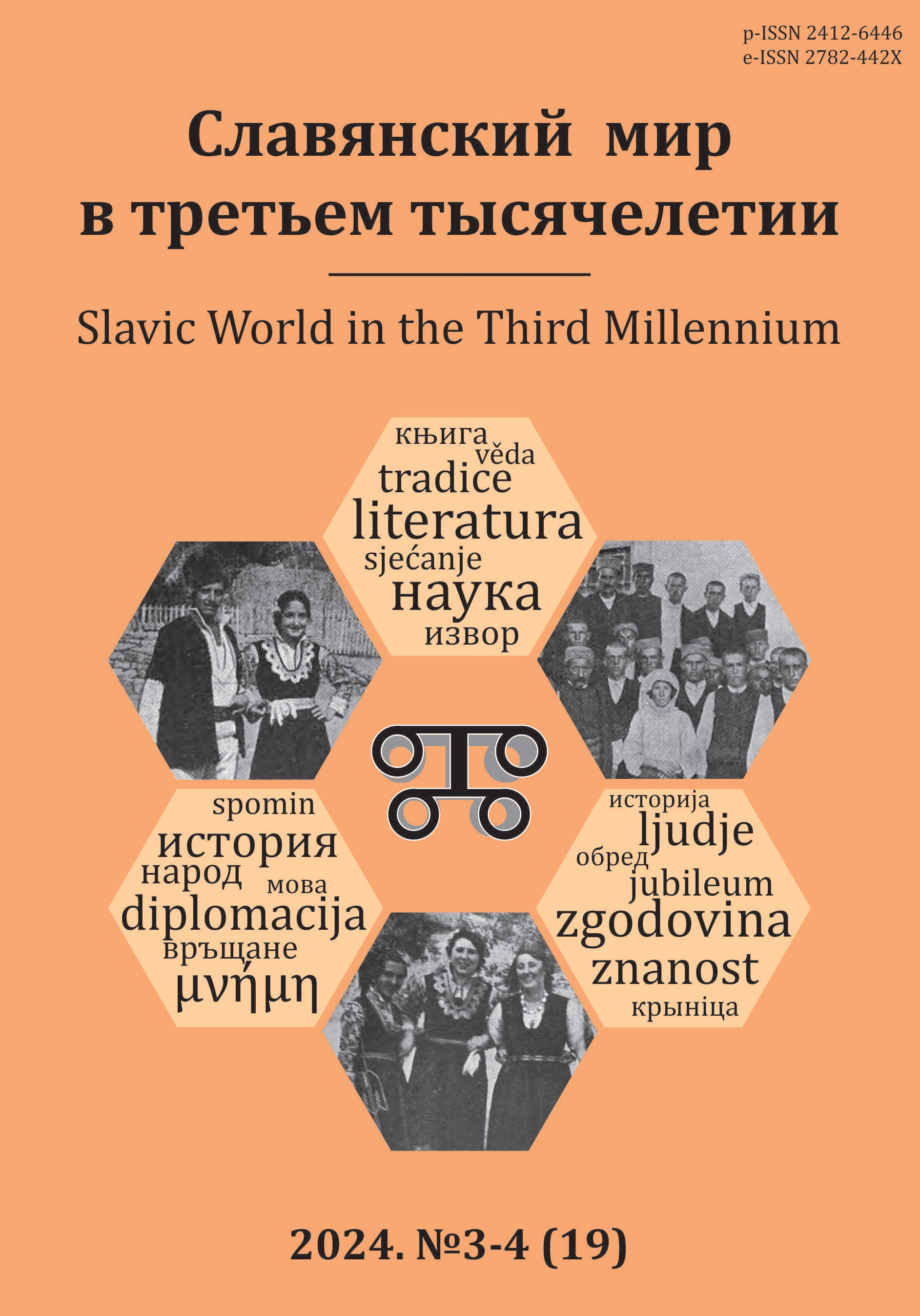Tombstones and Tombstone Inscriptions Among the Greeks of Russia: What a Cemetery Can Tell Us
DOI:
https://doi.org/10.31168/2412-6446.2024.19.3-4.10Keywords:
Greeks of Russia, field studies, funeral rites, cemetery, graveyard, Greek tombstones, epitaphs, necropolistics, tombstone inscriptions, Pontic dialectAbstract
This paper examines tombstones and tombstone inscriptions among the Greeks of Russia, descendants of immigrants from the Ottoman Empire. Based on field research of 2022–2024, the article analyzes data collected in the regions of compact residence of Greeks in the North Caucasus. Tombstones are divided into three periods: pre-Soviet, Soviet, and post-Soviet. Pre-soviet gravestones are of three types: regular gravestones, flat gravestones and church-shaped stones. All these types of monuments were also common among the Greeks in Asia Minor. Inscriptions in pre-Soviet times were made mainly in Greek; the article describes the main features of the epitaphs of this period. In the socialist era, the Greek language disappears from tombstones, which may be associated with both the repressions of 1937 and the general trend towards Sovietization of cemeteries. The article describes a unique type of Soviet Greek tombstone, made in the style of traditional monuments. Despite the ideological control over burial sites, Greek graves in the North Caucasus retained Orthodox symbolism throughout the Soviet era. The post-Soviet period is characterized by a visible uniformity of monuments: they are all made in the same workshops, from the same material. But the visual information on the monuments, primarily the Greek language, shows the ethnicity of the deceased. Other characteristic features of Greek burials in modern Russia are also noted: “houses” for candles from Greece, decorative elements in antique style, images of churches.
Funding
This work was supported by a grant from the Russian Science Foundation № 22-18-00484, https://rscf.ru/project/22-18-00484/, “Slavic-non-Slavic borderlands: funeral and memorial rite in ethnolinguistic coverage”.
Acknowledgements
I am deeply grateful to my father, who helped me with this paper and taught me to examine the cemetery with a researcher’s eye.
Received 9 November 2024
Revised 19 November 2024
Accepted 10 December 2024
How to cite: Nikitina, I. O., 2024. Tombstones and Tombstone Inscriptions Among the Greeks of Russia: What a Cemetery Can Tell Us. Slavic World in the Third Millennium, 19 (3–4), pp. 200–224. https://doi.org/10.31168/2412-6446.2024.19.3-4.10



